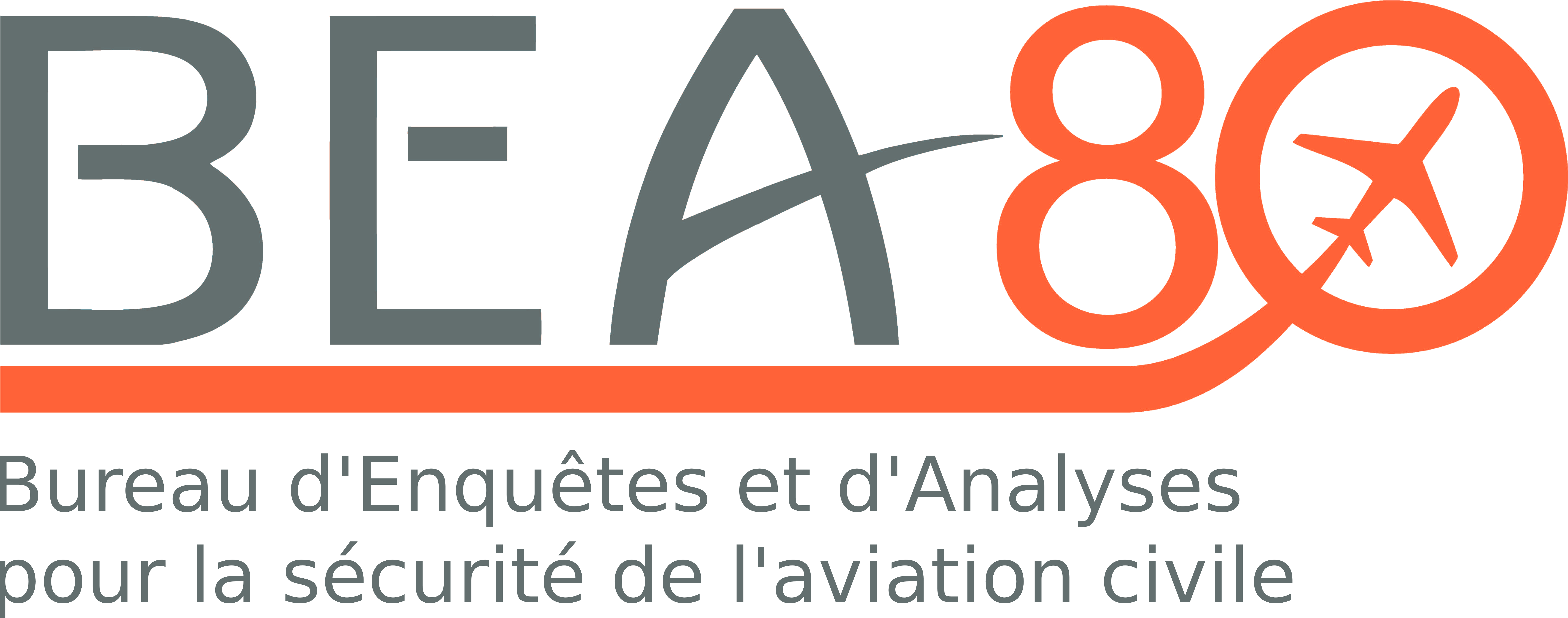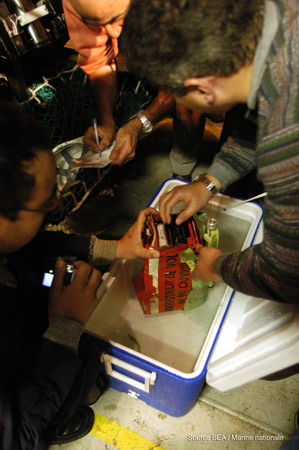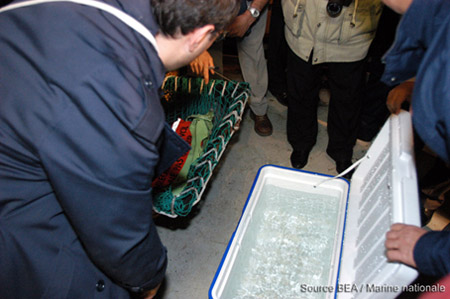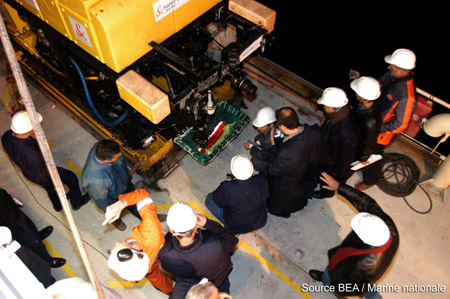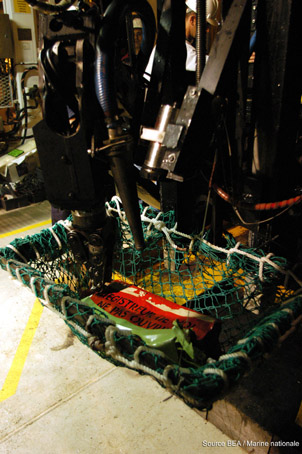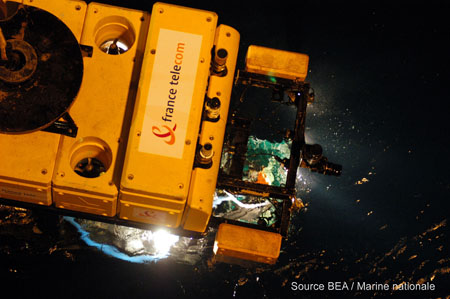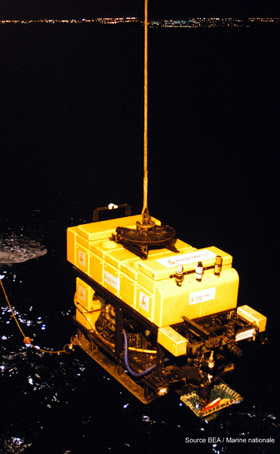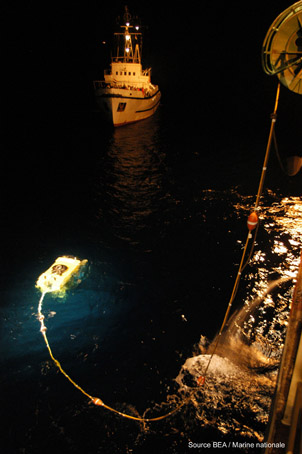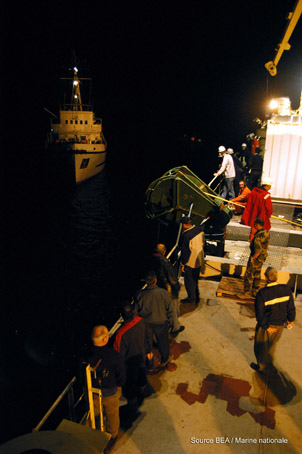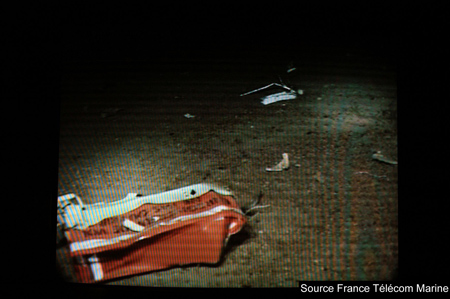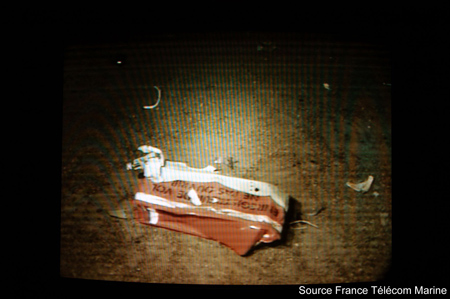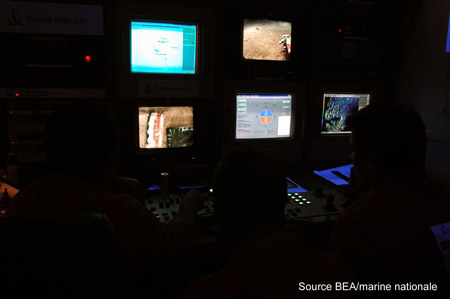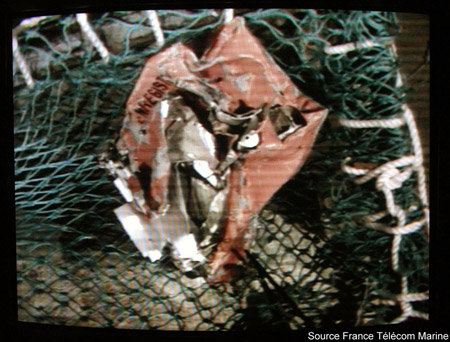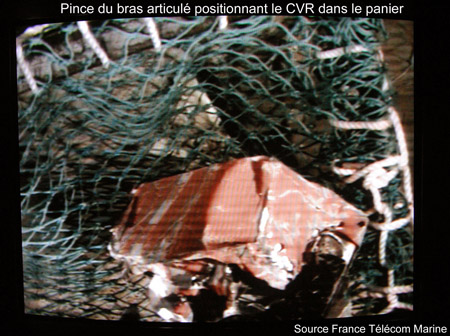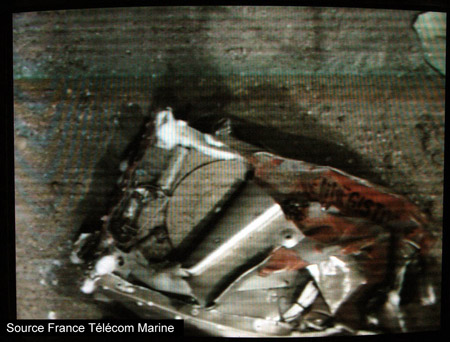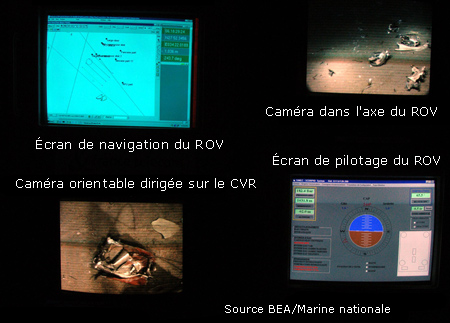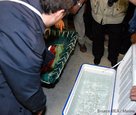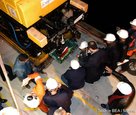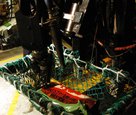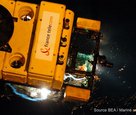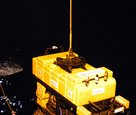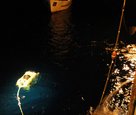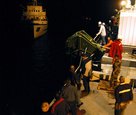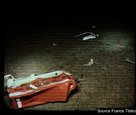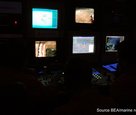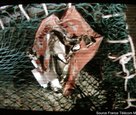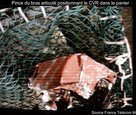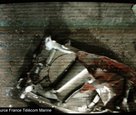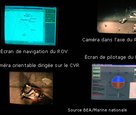Accident to the Boeing 737 registered SU-ZCF operated by Flash Airlines on 03/01/2004 near Charm el-Cheikh [Investigation led by AIB / Egypt]
Collision avec la mer après décollage
Final report. On January 3, 2004, about 02:45:06 UTC, 04:45:06 Local time, Flash Airlines flight FSH604, a Boeing 737-300, Egyptian registration SU-ZCF, crashed into the Red Sea shortly after takeoff from Sharm el-Sheikh International Airport (SSH) in South Sinai, Egypt. The flight was a passenger charter flight to Charles de Gaulle Airport (CDG), France with a stopover in Cairo international Airport (CAI) for refueling. Flight 604 departed from Sharm el-Sheikh airport with 2 pilots (Captain and First Officer), 1 observer, 4 cabin crew, 6 off-duty crew members and 135 passengers on board. The airplane was destroyed due to impact forces with the Red Sea with no survivals.
-
Information, 8 January 2004
On 3 January 2004 at Sharm-El-Sheik, the airplane registered SU-ZCF, a Boeing 737-300 operated by Flash Airlines, crashed into the sea shortly after takeoff, causing the deaths of the 148 persons on board, including 134 French passengers. The BEA’s staff shares the national sense of grief and bewilderment on this immensely sad occasion and extends its sincerest sympathies to the members of the families concerned.
In accordance with Annex 13 to the Convention on International Civil Aviation, the BEA is participating, along with its American counterpart the NTSB, in the technical investigation that has been launched by the Egyptian civil aviation authorities to determine the circumstances and causes of this accident.
Five safety investigators from the BEA are currently at the accident site. The limited information available at this moment in time does not allow us to understand this event. The BEA recommends that great care be taken to avoid any attempt at premature interpretation.
Some items of information are available on this site and these will be updated regularly.
-
Press release on 17 January 2004
The first stage of the technical investigation into the accident that occurred at Sharm-El-Sheik on 3 January, an accident that cost the lives of 148 people, including 134 French citizens, was centered on mobilizing the means required to survey the accident site and locate the airplane’s two flight recorders.
The joint efforts of all those participating in this phase of the investigation, in particular the French Navy and France Telecom, have just enabled the Flight Data Recorder (FDR) to be brought to the surface. The recorder was handed over to the President of the Egyptian Commission of Inquiry.
The FDR will be analyzed in Cairo, in collaboration with investigators from the BEA and the NTSB. The search is continuing to recover the second recorder, the Cockpit Voice Recorder (CVR), whose analysis will make it possible to correlate information with that contained in the FDR.
It is to be noted that the investigation is the responsibility of Egypt, the country on whose territory the accident occurred. A Commission of Inquiry was set up with this in mind. The National Transportation Safety Board (NTSB), the investigative body of the United States, the State of Manufacture of the airplane, and the BEA are participating in this investigation.
Annex 13 of the Convention on International Civil Aviation and French Law No. 99-243 of 29 March 1999 specify that the sole objective of the technical investigation is the prevention of future accidents or incidents. This activity is intended neither to apportion blame, nor to assess individual or collective responsibility. -
Press release on 18 January 2004
After locating and recovering the FDR, the flight data recorder of the Boeing 737-300 that crashed into the sea off Sharm-El-Sheik on 3 January 2004, a new stage has been reached. The airplane’s second recorder, the CVR, was identified in the vicinity of the place where the first one was found and was brought to the surface during the night.
The Cockpit Voice Recorder (CVR) records conversations and background noises and any alarms in the cockpit. The recorder is in bad external condition but this does not presuppose anything about the condition of the magnetic tape located inside the protective inner case. It was handed over to the President of the Egyptian Commission of Inquiry at the end of Sunday morning.
As with the FDR, the Commission of Inquiry plans to perform the readout in Cairo, in association with French and American investigators specialized in recorder readouts. This work may take several days, taking into account the possible difficulties in the readout and validation of data that are normally encountered in such cases.
Once again the combined efforts of all those participating in this significant phase of the technical investigation made the recovery of the recorder possible, in particular the French Navy and France Telecom. The BEA would like to express its thanks and its admiration to them for the work accomplished.
Annex 13 of the Convention on International Civil Aviation and French Law No. 99-243 of 29 March 1999 specify that the sole objective of the technical investigation is the prevention of future accidents or incidents. This activity is intended neither to apportion blame, nor to assess individual or collective responsibility. -
Press release, 21 January 2004
The Egyptian Commission of Inquiry, in association with the French and American investigators present in Cairo, has begun the readout of the recorders recovered from the wreckage of the Flash Airlines Boeing 737.
The data relating to the accident flight has been read out successfully. The parameters are currently being validated and investigators are listening to the CVR recording. This work entails the investigators identifying, confirming and timing the exact sequence of events recorded. The precise interpretation of these elements will be carried out in the second phase. The President of the Commission of Inquiry has already stated, based on the initial information gathered, that the possibility of terrorist acts has definitely been eliminated.
Simultaneously, work is proceeding in Sharm-El-Sheik in order to locate and recover significant parts of the airplane. This work will take several days, in parallel with the work carried out on the recorders. Administratively, the BEA has taken over from the French Navy, which will continue to offer its support and the advice of its divers. Service proposals from Alcatel Submarine Networks (Ile de Batz) and France Telecom Marine (SCORPIO ROV) have been accepted after a call for bids.
Annex 13 of the Convention on International Civil Aviation and French Law No. 99-243 of 29 March 1999 specify that the sole objective of the technical investigation is the prevention of future accidents or incidents. This activity is intended neither to apportion blame, nor to assess individual or collective responsibility. -
Press release on 3 mars 2004
Today, 3 March, two months have passed since the aviation disaster at Sharm-El-Sheik. The BEA reiterates its unerring commitment to the cause of aviation safety.
It was in this context that the BEA was invited by the Egyptian authorities to participate in the investigation that they are leading, in accordance with international agreements. The American NTSB is also participating in the investigation, the airplane being a Boeing.
The work of the investigation is continuing normally, as rapidly as possible. After the sea searches and the readout of the on-board recorders, it is possible to describe what happened:
The airplane, after a normal takeoff, began a turn to the left, which corresponds to the normal track. Towards 600 meters altitude, the turn was slowly inverted to the right and the airplane’s roll attitude increased progressively until it was on its side towards 1,700 meters. It then began to lose altitude rapidly until it crashed violently into the sea. The crew maintained a professional attitude throughout, aware that there was an abnormal situation and trying to control it.
The work carried out has made it possible to draw some initial conclusions. It was thus possible to eliminate any in-flight rupture of a part of the airplane’s structure and any malfunction in the airplane’s engines or rudder, as well as any malicious or terrorist act. Nothing in the dossiers relating to the crew, the preparation of the flight or the maintenance of the airplane has been brought to light that explains the accident.
However, these elements do not yet allow the accident sequence to be understood and explained. The investigators are working hard on this but, at present, any extrapolation of the facts described would be mere speculation. In this context, the idea that the crew thought that they were on autopilot is without any basis in fact.
The investigative work is continuing. The President of the Egyptian Commission of Inquiry, Mr. Kelada, has organized new work meetings, currently taking place in Cairo, to examine the calculations and analyses that have been carried out over the last few weeks. It is possible that these meetings may be extended by work in common on flight simulators. -
Press release on 21 April 2004
The investigation led by the Egyptian authorities into the accident to the Flash Airlines Boeing 737 at Sharm-El-Sheik is continuing, with the participation of American (NTSB) and French (BEA) investigators and the collaboration of the manufacturer Boeing. Within this framework, the President of the Commission of Inquiry wished to issue the following statement.
On the basis of the facts and the initial analyses, it has been established that the accident is linked to what happened on board the airplane between takeoff and striking the sea. The work performed, as well as the first calculations and simulations carried out by the manufacturer, allowed us to reduce the area of research and to eliminate several possible causes of the accident, though none of this has so far enabled us to explain what happened on 3 January. Additional research has therefore been undertaken.
The Egyptian and French investigators have succeeded in significantly improving the quality of the readout of the magnetic tape on which the last exchanges in the cockpit are recorded. This improvement will facilitate the complete transcription of the verbal exchanges and the spectral analysis of the background noise, which may make it possible to identify the sound of some selectors heard during the flight.
Equally, work on flight simulators has been organized in France, with the support of Air France, and in the United States in order to better understand the airplane's maneuvers and the operations of the on-board systems. This work is currently under way. Additional information on the progress of the investigation will be released when this work is completed. -
Press release on 10 November 2004
Le BEA communique : la commission d'enquête égyptienne sur l'Accident de charm el-Cheikh le 3 Janvier 2004 a établi un rapport d'étape.
Ce rapport sera présenté à la presse internationale demain 11 novembre au Caire par M. Shaker Kelada, président de la commission d'enquête.
A cette occasion, le BEA organise une réunion d'information à l'attention des familles des victimes de l'accident avec la participation de M. Kelada. Cette réunion aura lieu au Musée de l'Air et de l'Espace le samedi 20 novembbre en présence de M. Gilles de Robien, ministre de l'Equipement, des Transports, de l'Aménagement du Territoire, du Tourisme et de la Mer. -
Press release on 19 November 2004
Le 11 November, M. Kelada, président de la commission d'enquête égyptienne, a tenu au Caire une conférence de presse pour présenter un rapport relatif à l'Accident de Charm el-Cheikh le 3 janvier 2004. Il s'agit à ce stade d'un rapport factuel, sans analyse des faits ou conclusions. A cette occasion, M. Kelada a annoncé son calendrier pour la suite des travaux en vue de la préparation du rapport final dont il envisage la parution fin juin 2005.
Le BEA organise samedi 20 November au Musée de l'Air et de l'Espace, en présence de M. Kelada, une réunion d'information à l'attention des familles françaises des victimes de cet accident. Il s'agit de compléter leur information sur le déroulement de l'enquête technique et de leur expliciter le contenu du rapport en anglais qui leur sera remis, et dont une traduction en français est en préparation.
Il semble utile de préciser que le rapport factuel est une compilation des données collectées, organisée en dix-neuf chapitres selon les normes internationales. Il répertorie l'ensemble des éléments recueillis sur le déroulement du vol, le personnel, l'aéronef, les conditions météorologiques, les enregistreurs de bord, les essais et recherches, etc. Complété en tant que de besoin, ce rapport devrait constituer la première partie du rapport final.
L'enquête, menée par les autorités égyptiennes, n'est pas terminée et il n'est bien entendu pas encore possible de conclure sur les causes de l'accident. Les enquêteurs ont maintenant entrepris l'analyse des données en vue de la publication du rapport final qui présentera les résultats de l'analyse, les conclusions sur les causes de l'accident, et leurs recommandations de sécurité en vue de prévenir d'autres accidents.
A l'issue de la réunion, vers 13 h, un point presse sera organisé au BEA. -
Information on 25 March 2006
Le projet de rapport final de la commission d'enquête égyptienne sur la catastrophe de Charm el-Cheikh a été soumis pour observations au BEA et au NTSB américain, comme le prévoit la procédure internationale.
Les observations du BEA ont été remises au Président de la commission le 3 January 2006 et devraient être annexées au rapport final. Celui-ci peut être consulté sur le site des autorités de l'aviation civile égyptienne http://www.civilaviation.gov.eg
Vous pouvez aussi télécharger ce rapport sur notre site
